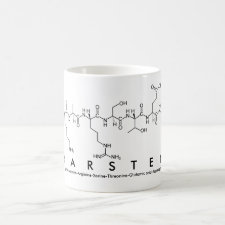
Authors: Yilmaz E, Mosbach K, Haupt K
Article Title: Influence of functional and cross-linking monomers and the amount of template on the performance of molecularly imprinted polymers in binding assays.
Publication date: 1999
Journal: Analytical Communications
Volume: 36
Issue: (5)
Page numbers: 167-170.
DOI: 10.1039/a901339c
Abstract: An evaluation of molecularly imprinted polymers has been performed using radioligand binding assays. The bronchodilator theophylline was chosen as a model analyte and template molecule. The effect of type and amount of functional and cross-linking monomers, as well as of different combinations of functional and cross-linking monomers has been studied with respect to the yield of high-affinity binding sites and their dissociation constants. Copolymers of trifluoromethyl acrylic acid with divinylbenzene yielded the highest, and the combination of trifluoromethyl acrylic acid with ethylene glycol dimethacrylate the lowest binding capacities. Polymers can be imprinted with very small amounts of template molecule without jeopardising their affinity and specificity. Although binding isotherms revealed a slight decrease in the absolute number of high- affinity sites in polymers prepared with low template concentrations, the relative yield in high-affinity sites increased. This extends the potential applicability of non-covalent molecular imprinting to template molecules which are expensive, not available in large quantities, or poorly soluble. The degree of cross-linking also seems to play a less important role for the recognition properties of the polymer in binding assay applications. Even only 19% crosslinked polymers were still specific, which could for instance facilitate the preparation of thin polymer films or membranes



Join the Society for Molecular Imprinting

New items RSS feed
Sign-up for e-mail updates:
Choose between receiving an occasional newsletter or more frequent e-mail alerts.
Click here to go to the sign-up page.
Is your name elemental or peptidic? Enter your name and find out by clicking either of the buttons below!
Other products you may like:
 MIPdatabase
MIPdatabase









